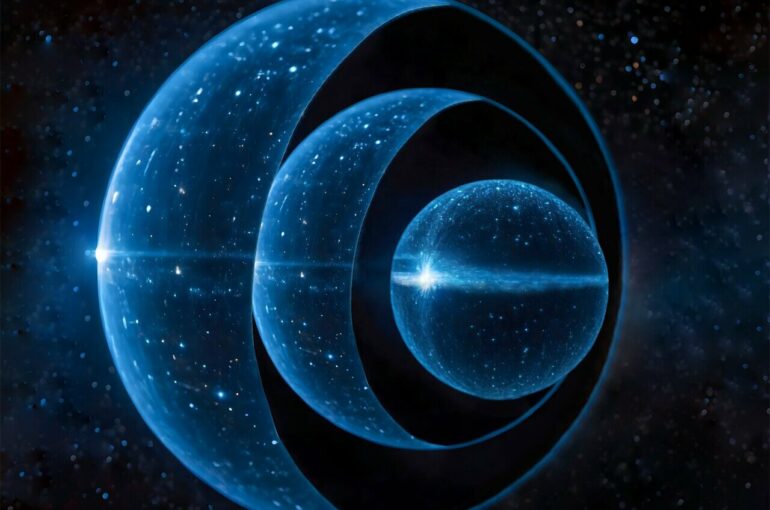The interior of black holes remains a conundrum for science. In 1916, German physicist Karl Schwarzschild outlined a solution to Albert Einstein’s equations of general relativity, in which the center of a black hole consists of a so-called singularity, a point at which space and time no longer exist. Here, the theory goes, all physical laws, including Einstein’s general theory of relativity, no longer apply; the principle of causality is suspended.
This constitutes a great nuisance for science—after all, it means that no information can escape from a black hole beyond the so-called event horizon. This could be a reason why Schwarzschild’s solution did not attract much attention outside the theoretical realm—that is, until the first candidate for a black hole was discovered in 1971, followed by the discovery of the black hole in the center of our Milky Way in the 2000s, and finally the first image of a black hole, captured by the Event Horizon Telescope Collaboration in 2019.
In 2001, Pawel Mazur and Emil Mottola proposed a different solution to Einstein’s field equations that led to objects that they called gravitational condensate stars, or gravastars. Contrary to black holes, gravastars have several advantages from a theoretical astrophysics perspective.
On the one hand, they are almost as compact as black holes and also exhibit a gravity at their surface that is essentially as strong as that of a black hole, hence resembling a black hole for all practical purposes. On the other hand, gravastars do not have an event horizon, that is, a boundary from within which no information can be sent out, and their core does not contain a singularity.
Instead, the center of a gravastar is made up of an exotic (dark) energy that exerts a negative pressure to the enormous gravitational force compressing the star. The surface of a gravastar is represented by a wafer-thin skin of ordinary matter, the thickness of which approaches zero.
Theoretical physicists Daniel Jampolski and Prof. Luciano Rezzolla of Goethe University Frankfurt have now presented a solution to the field equations of general relativity that describes the existence of a gravastar inside another gravastar. They have given this hypothetical celestial object the name “nestar” (from the English “nested”). The study is published in Classical and Quantum Gravity.
Daniel Jampolski, who discovered the solution as part of his Bachelor’s thesis supervised by Luciano Rezzolla, says, “The nestar is like a matryoshka doll. Our solution to the field equations allows for a whole series of nested gravastars.” Whereas Mazur and Mottola posit that the gravastar has a near infinite thin skin consisting of normal matter, the nestar’s matter-composed shell is somewhat thicker: “It’s a little easier to imagine that something like this could exist.”
Luciano Rezzolla, Professor of Theoretical Astrophysics at Goethe University, explains, “It’s great that even 100 years after Schwarzschild presented his first solution to Einstein’s field equations from the general theory of relativity, it’s still possible to find new solutions. It’s a bit like finding a gold coin along a path that has been explored by many others before. Unfortunately, we still have no idea how such a gravastar could be created. But even if nestars don’t exist, exploring the mathematical properties of these solutions ultimately helps us to better understand black holes.”
More information:
Daniel Jampolski et al, Nested solutions of gravitational condensate stars, Classical and Quantum Gravity (2024). DOI: 10.1088/1361-6382/ad2317
Provided by
Goethe University Frankfurt am Main
Citation:
A star like a Matryoshka doll: New theory for gravastars (2024, February 15)



